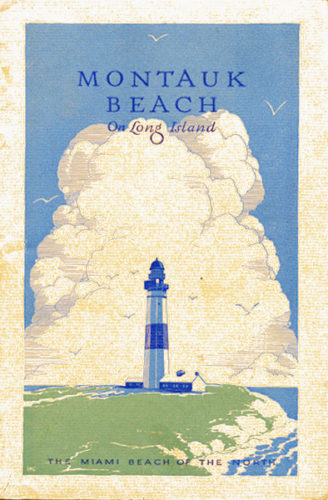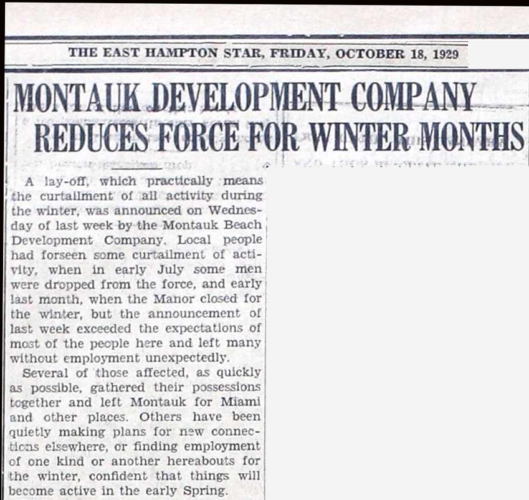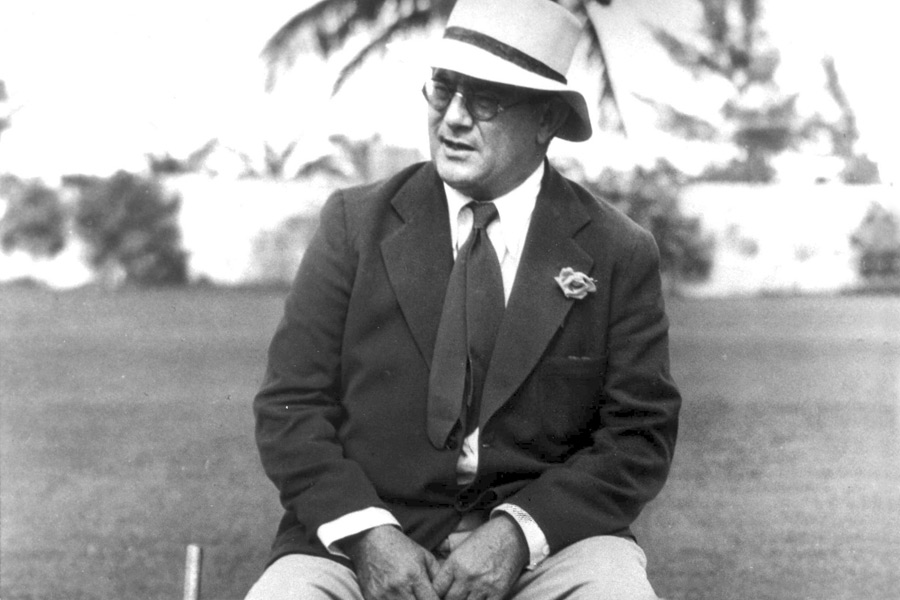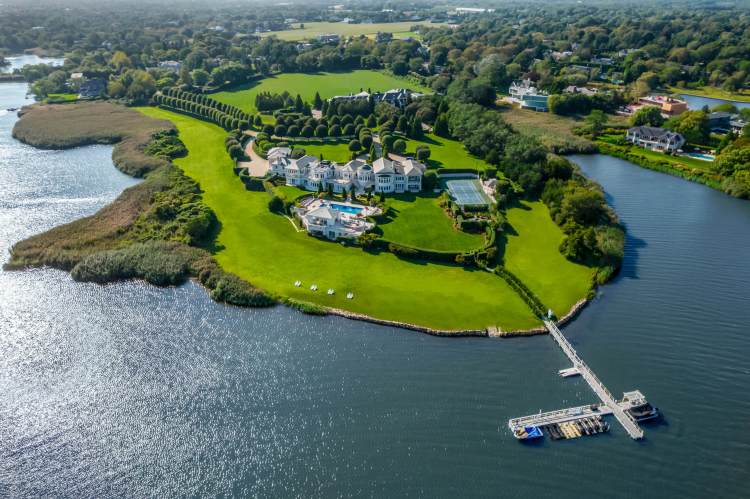Now Montauk Beach, through the vision and resources of a group of distinguished builders, is being transformed into America’s finest out-of-door center, where the real aristocrats of modern America may find new health, new relaxation, new ways to play amid luxurious surroundings.
“He could take Death Valley and turn it into a sunken garden,” Will Rogers, 1925, about Fisher.
 Carl Fisher attempted the most ambitious real estate development in the history of the East End. In 1925, he bought the entire peninsula of Montauk, 10,000 acres in all, for $2.5 million (that’s about $315 million in today’s dollars). The developer of Miami Beach, Fisher’s dream was to turn Montauk into the Miami Beach of the north. Fisher wanted the Gatsby crowd to think, “Miami Beach in the winter, Montauk in the summer.”
Carl Fisher attempted the most ambitious real estate development in the history of the East End. In 1925, he bought the entire peninsula of Montauk, 10,000 acres in all, for $2.5 million (that’s about $315 million in today’s dollars). The developer of Miami Beach, Fisher’s dream was to turn Montauk into the Miami Beach of the north. Fisher wanted the Gatsby crowd to think, “Miami Beach in the winter, Montauk in the summer.”
Although his dreams for Montauk remained unfulfilled, and he died penniless, Fisher today is remembered for a number of astonishing accomplishments, mostly from his love of the automobile. In fact, Fisher could fairly be said to have made cars a viable form of transportation in the first place.
In 1913, the American Motorist described Carl Fisher as a “World-maker” who “builds houses, factories, homes, skyscrapers, telegraph and telephone lines, and is interested in every human activity, great and small.”
He was born in Greensburg, Indiana, in 1874. In 1904, he co-founded Prest-O-Lite Co., which developed the acetylene gas that enabled car headlights to work properly. He was also co-founder and president of the Indianapolis Speedway, which is still, of course, famous today for the Indy 500 race. (In fact, the 103rd running of the race is this Sunday, May 26.)
His marketing gimmicks at the Fisher Automobile Co., one of the nation’s first car dealers, are still amazing. One time he ferried a Stoddard-Dayton across Indianapolis using a hot-air balloon; another time, he pushed a car off the roof of a downtown building and had his brother drive it away.
Fisher was also a strong advocate for the Good Roads Movement, which aimed to expand and improve the nation’s road networks. He pushed for the construction of transcontinental roads, including the east-west Lincoln Highway, built 1912, and the north-south Dixie Highway, built 1914.
Fisher’s personal life was scandalous. In 1909, at age 35, he married a 15 year old girl. That surprised his longtime opera singer girlfriend, who then sued him for “breach of promise,” seeking $500,000. She won damages of $25,000.

Fisher’s first Montauk building was the 250-room Manor Hotel, which opened in June 1927. He also built a polo field, the Montauk Yacht Club, the Montauk Tennis Auditorium (now the Playhouse), the Surf Club with its enormous oceanside pools, the Beach Casino, and a boardwalk. He developed downtown Montauk into the town we know it today (and the seven-story office building in the downtown plaza he created was then the tallest building on Long Island). The Montauk Community Church he built still stands, and his pink sidewalks largely remain. For the maids, porters, and croupiers to work in his establishments, he built a section of town still known as Shepherds Neck, complete with grazing sheep.

Unfortunately, Fisher’s vision came more or less to an end with the crashing of the stock market in October 1929. The Montauk Beach Development Company went into receivership in 1932 and by the mid 1930s, Fisher was virtually penniless. He died in 1939 of complications from alcoholism. His wife had divorced him in 1926, tired of his womanizing ways, but always said she couldn’t forget him: “I married again and again,” she wrote, adding, “I couldn’t stay married to them because life was just too drab. You see, living with Carl Fisher was like living in a circus. It was excitement, aliveness, that I never found again.”























